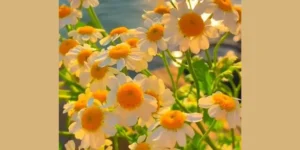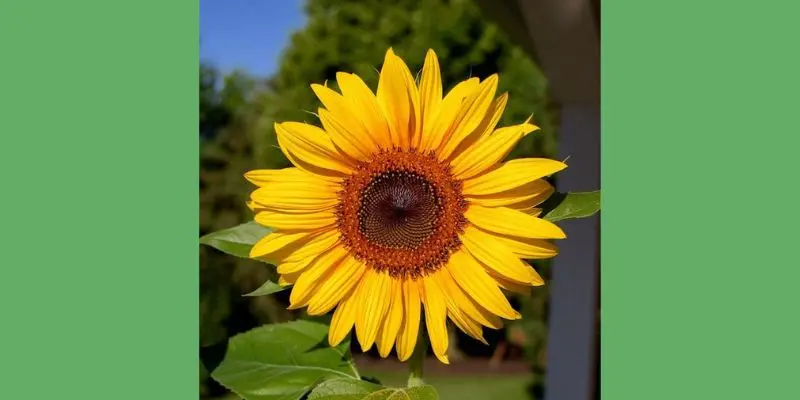Are you captivated by the enchanting allure of double flower hollyhocks? These majestic blooms, with their full, ruffled petals, have been adored by gardeners for centuries. Growing these stunning flowers from seed is a rewarding experience that brings a touch of old-world charm to any garden.
Whether you’re a seasoned gardener or a novice green thumb, this guide will equip you with the knowledge and expertise to successfully cultivate double flower hollyhocks from seed. From selecting the perfect seeds to nurturing your plants to maturity, we’ll cover every step of the process.
Understanding Double Flower Hollyhocks

Double flower hollyhocks are a captivating variety of this beloved garden plant, distinguished by their opulent, multi-layered blooms. Unlike their single-flowered counterparts, double hollyhocks possess an extra row or more of petals, creating a full, rounded, and often ruffled appearance. This added dimension of petal complexity elevates their visual appeal, making them a standout in any garden.
The transformation from a single to double flower is a result of genetic mutation. Over time, gardeners and breeders have carefully selected and cultivated these mutations to produce the stunning double-flowered varieties we enjoy today.
The Allure of Double Blooms
- Enhanced Visual Impact: Double hollyhocks undeniably command attention in the garden. Their full, rounded blooms create a sense of abundance and luxury.
- Versatility: These plants are equally at home in formal or cottage-style gardens. Their tall spires of flowers add vertical interest and drama to the landscape.
- Cut Flower Potential: Double hollyhocks make excellent cut flowers. Their long stems and showy blooms create impressive arrangements.
Varieties and Colors
The world of double flower hollyhocks offers a breathtaking array of colors and forms. Gardeners can choose from classic hues like pink, red, white, and yellow, or explore more exotic shades such as purple, black, and even multicolored varieties.
Some popular double hollyhock series include:
- Chater’s Double: Known for their large, ruffled blooms in a wide range of colors.
- Jedde Double: Offers compact plants with vibrant double flowers.
- Giganteus: Produces tall spikes of double blooms in various shades.
Growing Challenges and Solutions
While double hollyhocks are generally easy to grow, they can face some challenges:
- Disease susceptibility: They are prone to diseases like rust and powdery mildew. Proper spacing, good air circulation, and resistant varieties can help mitigate these issues.
- Support: Due to their tall growth habit, they often require staking to prevent them from toppling over.
- Seed germination: Double hollyhock seeds can have inconsistent germination rates. Starting seeds indoors and providing optimal conditions can improve success.
By addressing these challenges proactively, gardeners can enjoy the beauty of double hollyhocks without frustration.
Propagating Double Flower Hollyhocks
Propagating double hollyhocks can be a rewarding endeavor, allowing gardeners to increase their plant collection. The most common method is from seed. However, it’s important to note that double-flowered characteristics are not always reliably inherited from seed, and you may end up with single-flowered plants.
To increase the chances of obtaining double-flowered offspring, consider:
- Saving seeds from the best double-flowered plants: This can improve the odds of producing similar blooms in the next generation.
- Root cuttings: While more challenging, root cuttings can preserve the exact characteristics of a desired double hollyhock variety.
Benefits of Growing Double Flower Hollyhocks
Double flower hollyhocks offer a multitude of benefits that make them a cherished addition to any garden:
Aesthetic Appeal
- Stunning Visual Impact: Their full, ruffled blooms create a captivating display that adds drama and elegance to the garden.
- Vertical Interest: Their tall spires of flowers bring height and dimension to the landscape.
- Nostalgia and Charm: Double hollyhocks evoke a sense of nostalgia and create a romantic atmosphere.
Ecological Benefits
- Pollinator Attraction: While double blooms may produce less pollen than single varieties, they still attract bees, butterflies, and other beneficial insects.
- Wildlife Habitat: Hollyhocks provide a source of nectar and pollen for pollinators, contributing to ecosystem health.
Practical Benefits
- Low Maintenance: Once established, hollyhocks require minimal care, making them ideal for busy gardeners.
- Versatile Use: They can be grown in borders, along fences, or as a focal point in the garden.
- Cut Flower Potential: Their long stems and beautiful blooms make them excellent choices for fresh bouquets.
Additional Benefits
- Soil Improvement: Hollyhocks can help improve soil structure as their deep roots break up compacted soil.
- Privacy Screen: Tall varieties can be used to create a natural privacy screen.
By incorporating double flower hollyhocks into your garden, you can enjoy both their ornamental beauty and their positive impact on the environment.
Sowing Double Flower Hollyhock Seeds
Timing Your Planting
Hollyhocks are typically biennial, meaning they produce foliage the first year and flowers the second. However, with careful timing, you can enjoy blooms in the same year.
- Direct Sowing: Plant seeds outdoors in early spring as soon as the soil can be worked. This method often results in blooms the following year.
- Starting Indoors: For faster results, start seeds indoors about 8-10 weeks before the last frost. Transplant seedlings outdoors after the danger of frost has passed.
Preparing the Soil
Hollyhocks thrive in well-drained soil rich in organic matter. Prepare the planting area by loosening the soil to a depth of about 12 inches. Incorporate compost or aged manure for improved fertility.
Sowing the Seeds
- Direct Sowing: Sow seeds about 1/4 inch deep and space them about 12 inches apart. Cover with a thin layer of soil.
- Starting Indoors: Use seed starting trays filled with a quality seed starting mix. Sow seeds on the surface and lightly cover with soil.
Germination and Care
- Light: Hollyhock seeds require light for germination, so do not cover them deeply.
- Moisture: Keep the soil consistently moist but not soggy.
- Temperature: Optimal germination temperatures are around 65-75°F (18-24°C).
Thinning and Transplanting
If you started seeds indoors, transplant seedlings outdoors after the last frost, spacing them about 2-3 feet apart. If you direct-sowed, thin seedlings to about 12 inches apart once they have a few sets of true leaves.
Caring for Double Flower Hollyhock Seedlings
Providing Optimal Conditions
- Sunlight: Hollyhock seedlings thrive in bright, indirect light. Place them near a sunny window or under grow lights.
- Temperature: Maintain a consistent temperature around 65-75°F (18-24°C) for optimal growth.
- Watering: Keep the soil moist but not soggy. Allow the top inch of soil to dry slightly between waterings.
Preventing Damping Off
Damping off is a fungal disease that can kill seedlings. To prevent it:
- Use well-draining potting mix.
- Avoid overwatering.
- Ensure good air circulation around seedlings.
Transplanting Seedlings Outdoors
Once the danger of frost has passed and seedlings have developed several sets of true leaves, they are ready for transplanting.
- Choose a sunny location with well-drained soil.
- Dig planting holes twice as wide as the seedling container.
- Gently remove seedlings from their containers and plant them at the same depth as they were growing indoors.
- Water thoroughly after transplanting.
Hardening Off
Before transplanting seedlings outdoors, it’s essential to harden them off. This process gradually acclimates them to outdoor conditions.
- Begin by placing seedlings outside for a few hours each day, gradually increasing the time spent outdoors.
- Protect seedlings from direct sunlight, wind, and cold temperatures during this process.
By following these guidelines, you can nurture your hollyhock seedlings into healthy, thriving plants.
Conclusion
Growing double flower hollyhocks from seed is a delightful and rewarding endeavor. With careful planning and attentive care, you can transform tiny seeds into magnificent floral displays that will grace your garden for years to come.
Remember, patience is key when cultivating hollyhocks. While they may take a little longer to bloom than some annuals, the wait is well worth it. The breathtaking beauty of their double flowers will undoubtedly become a cherished highlight of your garden.
So, why wait? Start your hollyhock adventure today by selecting high-quality double flower hollyhock seeds and following the expert guidance provided in this guide. Happy gardening!




